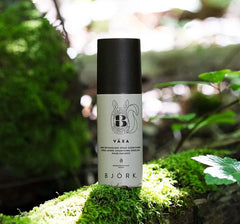Gärtnern mit deinen Kindern ist eine wunderbare Aktivität, die an den verfügbaren Platz angepasst werden kann. Egal, ob du einen großen Garten, eine kleine Terrasse oder nur einige Fensterbänke drinnen hast, es gibt viele Möglichkeiten, deine Kinder in das Gärtnern einzubeziehen, die Natur kennenzulernen und gemeinsam wertvolle Zeit zu verbringen. Hier sind einige Tipps und Ideen für das Gärtnern mit Kindern, abhängig von deinem verfügbaren Platz.
Das Bild zeigt unsere Kinderschüssel und unseren Kinderbecher.
Garten: Große Möglichkeiten und Raum für Kreativität
Einen kinderfreundlichen Garten planen
Gemeinsame Kultivierungen:
- Bereite den Boden vor, indem du Unkraut jätest und Kompost oder Mist einarbeitest, um die Qualität des Bodens zu verbessern.
- Erstelle einen Plan, welche Pflanzen du anbauen möchtest. Kinder lieben schnell wachsende Pflanzen wie Radieschen (Ernte in 3-4 Wochen), Sonnenblumen (blühen in 2-3 Monaten) und Zuckerschoten (Ernte in 60-70 Tagen).
- Markiere den Bereich mit kleinen Zäunen oder Steinen, damit die Kinder wissen, wo ihr Teil des Gartens ist.
Einfach zu züchtende Pflanzen:
- Karotten: Säe die Samen direkt in den Boden im frühen Frühling oder späten Herbst. Sie brauchen 2-4 Monate, um zur Ernte zu wachsen.
- Radieschen: Säe die Samen direkt in den Boden und gieße regelmäßig. Radieschen reifen schnell und können innerhalb von 3-4 Wochen geerntet werden.
- Kürbisse: Säe die Samen direkt in den Boden nach dem letzten Frost. Kürbisse benötigen 3-4 Monate, um zu reifen.
Themen-Gärten:
- Schmetterlingsgarten: Pflanze Blumen, die Schmetterlinge anziehen, wie Lavendel, Zinnien und Buddleia. Diese Pflanzen bieten Nektar und Anziehung für Schmetterlinge.
- Duftgarten: Pflanze Pflanzen mit angenehmen Düften wie Minze, Lavendel und Rosmarin. Die Kinder können die Blätter reiben, um die verschiedenen Düfte zu erleben.
- Pizzagarten: Baue Tomaten, Basilikum, Oregano und Paprika an. Diese können verwendet werden, um hausgemachte Pizzen zu machen, was sowohl lehrreich als auch spaßig für die Kinder ist – und lecker für die ganze Familie!
Kompostierung:
- Kompostbehälter: Erstelle einen Komposthaufen oder verwende einen Kompostbehälter.
- Was kann kompostiert werden? Lehre die Kinder, Obst- und Gemüsereste, Eierschalen, Kaffeesatz und Gartenabfälle hinzuzufügen. Vermeide Fleisch, Milchprodukte und Öle.
- Pflege: Wende den Kompost regelmäßig, um ihn zu belüften und den Zersetzungsprozess zu beschleunigen.
Bewässerung und Pflege der Pflanzen:
- Werkzeuge: Gib den Kindern kleine Gießkanne und Gartengeräte.
- Routinen: Erstelle einen Bewässerungsplan und lehre sie, die Bodenfeuchtigkeit vor dem Gießen zu überprüfen.
Das Bild zeigt unseren Kinderbecher.
Patio: Kompakte und effiziente Kultivierung
Vertikale Flächen nutzen
Vertikale Kultivierung:
- Kletterpflanzen: Pflanze Erbsen, Bohnen und Tomaten in der Nähe einer Stütze oder eines Spaliers. Befestige die Pflanzen vorsichtig mit Gartenbindfäden, während sie wachsen.
- Hängende Töpfe: Verwende hängende Töpfe für Erdbeeren, Kräuter und kleine Tomatenpflanzen. Platziere sie an einem sonnigen Standort.
Palettenringe und Töpfe:
- Palettenringe: Fülle Palettenringe mit guter Erde und Kompost. Pflanze Gemüse wie Salat, Spinat und Kräuter. Diese Pflanzen haben flachere Wurzeln und gedeihen gut in Palettenringen.
- Große Töpfe: Verwende große Töpfe, um Kartoffeln, Karotten und Paprika anzubauen. Stelle sicher, dass die Töpfe Drainagelöcher haben, um Überwässerung zu vermeiden.
Mini-Gewächshaus:
- DIY-Gewächshaus: Schneide den Boden großer Plastikflaschen ab und stelle sie über junge Pflanzen, um ein Mini-Gewächshaus zu schaffen.
- Kleine Gewächshäuser: Verwende kleine Plastik- oder Holzkisten mit klaren Deckeln, um Samen früh in der Saison anzubauen.
Kräuter- und Küchengarten:
- Kräuter anbauen: Pflanze Kräuter wie Basilikum, Petersilie und Minze in kleinen Töpfen oder Palettenringen. Die Kinder können die Kräuter ernten und zum Kochen verwenden.
- Pflege: Zeige den Kindern, wie man Kräuter richtig schneidet, um neues Wachstum zu fördern.
Drinnen: Kreative und lehrreiche Projekte
Fensterkultivierung
Kräutergarten auf der Fensterbank:
- Töpfe und Gläser: Verwende kleine Töpfe oder recycelte Dosen. Fülle sie mit Blumenerde und säe Kräuter wie Basilikum, Schnittlauch und Koriander.
- Platzierung: Stelle die Töpfe auf eine sonnige Fensterbank und gieße regelmäßig.
Mikrogreens:
- Materialien: Verwende flache Schalen oder Teller und fülle sie mit einer dünnen Schicht Erde.
- Samen säen: Streue Kresse-, Radieschen- oder Erbsensprossen-Samen über die Erde und decke sie mit einer dünnen Schicht Erde ab. Leicht gießen und die Erde feucht halten.
- Ernte: Mikrogreens sind in 1-2 Wochen zur Ernte bereit, wenn sie etwa 5 cm hoch sind.
Wiederverwendung von Lebensmittelabfällen:
- Beispiel: Verwende abgeschnittene Teile von Salat, Sellerie und Zwiebel. Lege sie in kleine Schalen mit Wasser und stelle sie an einen sonnigen Ort. Das Wasser regelmäßig wechseln.
- Beobachtung: Die Kinder können beobachten, wie die Pflanzen aus diesen Lebensmittelresten wieder zu wachsen beginnen.
Terrarium:
- Materialien: Verwende einen Glasbehälter und fülle den Boden mit kleinen Steinen für die Drainage. Füge dann eine Schicht Aktivkohle und dann Erde hinzu.
- Pflanzen: Pflanze kleine Pflanzen wie Sukkulenten oder Farne. Dekoriere mit kleinen Steinen oder Figuren, um eine Miniaturwelt zu schaffen.
- Pflege: Leicht mit Wasser besprühen und das Terrarium an einem Ort mit indirektem Licht aufbewahren.
Sprossenzucht:
- Samen: Verwende Samen wie Alfalfa, Mungobohnen oder Sonnenblumenkerne.
- Methode: Weiche die Samen über Nacht ein und spüle sie dann ab. Lege sie in ein Keimglas oder ein Glas, das mit Gaze bedeckt ist, und halte sie an einem dunklen Ort.
- Pflege: Spüle die Samen zweimal täglich, bis die Sprossen zur Ernte bereit sind, normalerweise innerhalb von 3-7 Tagen.
Egal, wie viel oder wie wenig Platz du hast, es gibt immer Möglichkeiten, deine Kinder in das Gärtnern und Wachsen einzubeziehen. Durch die Anpassung der Aktivitäten an deinen verfügbaren Platz kannst du eine lehrreiche und unterhaltsame Umgebung schaffen, in der die Kinder eine Liebe zur Natur entwickeln und ein Verständnis für Nachhaltigkeit gewinnen. Also ziehe deine Handschuhe an und beginne dein grünes Abenteuer gemeinsam – deine Kinder werden dir die Erinnerungen und Lektionen danken, die ihr zusammen schafft!








